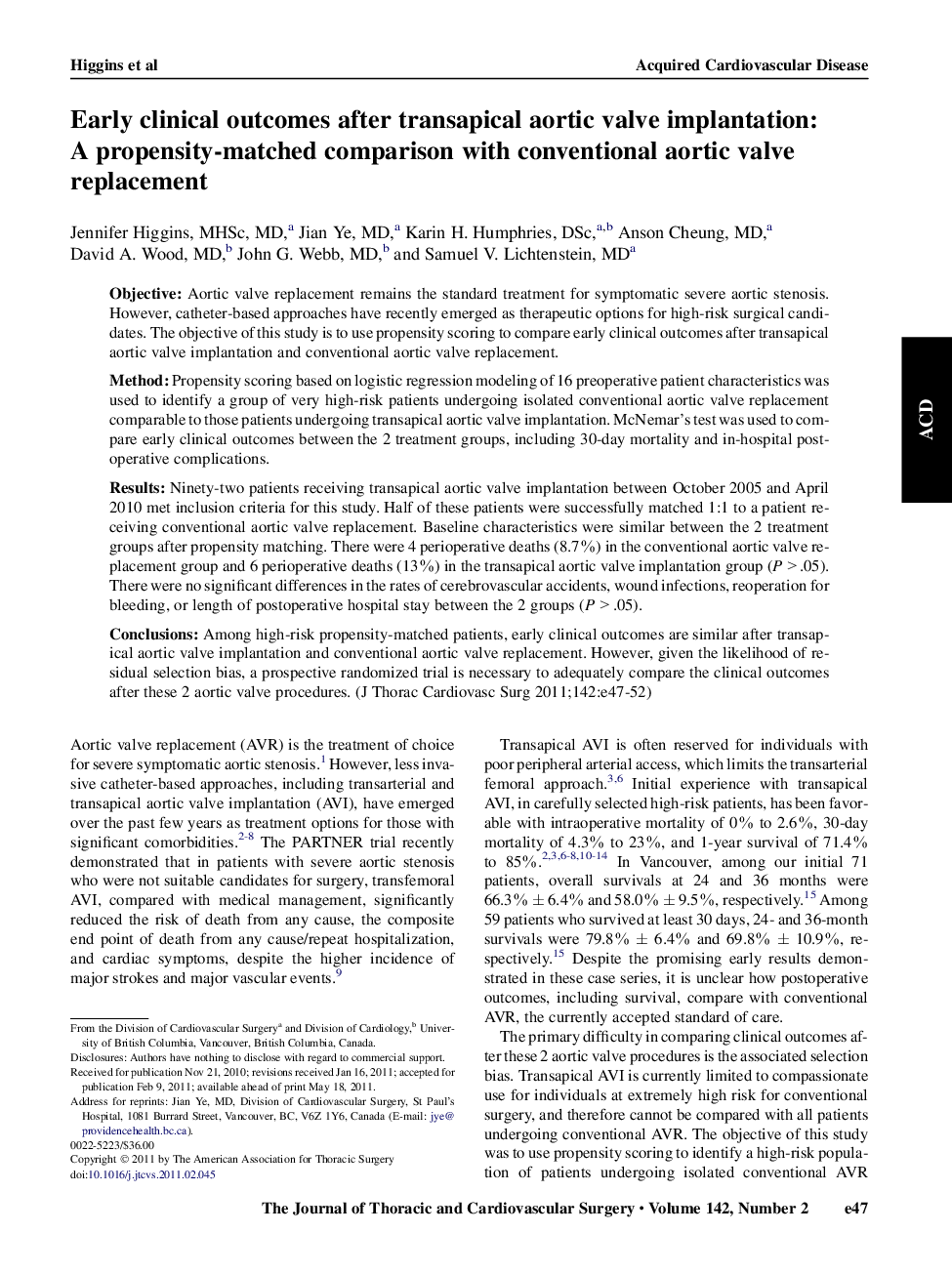| Article ID | Journal | Published Year | Pages | File Type |
|---|---|---|---|---|
| 2982580 | The Journal of Thoracic and Cardiovascular Surgery | 2011 | 6 Pages |
ObjectiveAortic valve replacement remains the standard treatment for symptomatic severe aortic stenosis. However, catheter-based approaches have recently emerged as therapeutic options for high-risk surgical candidates. The objective of this study is to use propensity scoring to compare early clinical outcomes after transapical aortic valve implantation and conventional aortic valve replacement.MethodPropensity scoring based on logistic regression modeling of 16 preoperative patient characteristics was used to identify a group of very high-risk patients undergoing isolated conventional aortic valve replacement comparable to those patients undergoing transapical aortic valve implantation. McNemar’s test was used to compare early clinical outcomes between the 2 treatment groups, including 30-day mortality and in-hospital postoperative complications.ResultsNinety-two patients receiving transapical aortic valve implantation between October 2005 and April 2010 met inclusion criteria for this study. Half of these patients were successfully matched 1:1 to a patient receiving conventional aortic valve replacement. Baseline characteristics were similar between the 2 treatment groups after propensity matching. There were 4 perioperative deaths (8.7%) in the conventional aortic valve replacement group and 6 perioperative deaths (13%) in the transapical aortic valve implantation group (P > .05). There were no significant differences in the rates of cerebrovascular accidents, wound infections, reoperation for bleeding, or length of postoperative hospital stay between the 2 groups (P > .05).ConclusionsAmong high-risk propensity-matched patients, early clinical outcomes are similar after transapical aortic valve implantation and conventional aortic valve replacement. However, given the likelihood of residual selection bias, a prospective randomized trial is necessary to adequately compare the clinical outcomes after these 2 aortic valve procedures.
